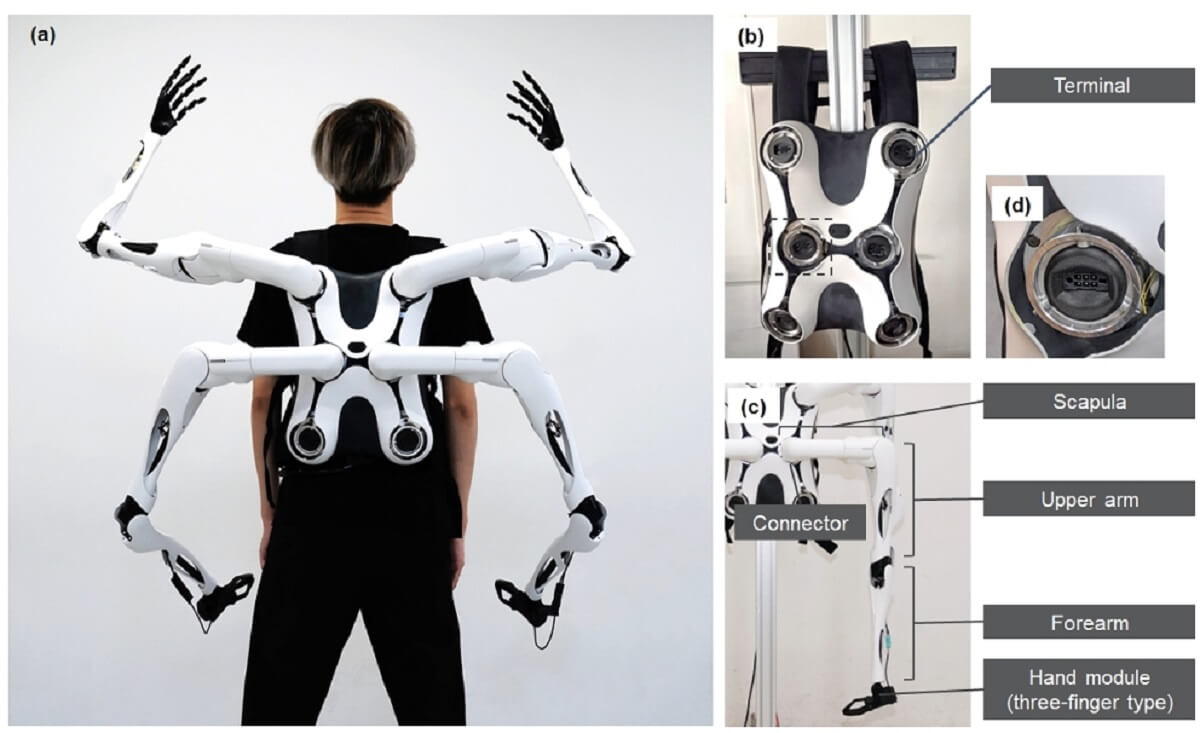TOKYO, Japan — In a futuristic leap, researchers from the University of Tokyo have developed wearable robotic arms that users can strap onto their backs for extra help — and potentially, social interaction. Known as Jizai Arms, these robotic limbs can be added or removed as needed and even swapped between friends.
The base unit is strapped onto the user, who can then attach up to six robotic arms. These arms come with hand modules that can be attached depending on what tasks the user is performing. They can be controlled either by the wearer or remotely.
According to the research team, Jizai Arms “was designed to enable social interaction between multiple wearers.” This could mean that in the future, we could see people exchanging or sharing these wearable robotic limbs as part of their daily social interactions.

During testing, users found the robotic arms to be so intuitive that they actually missed them when they were removed.
“From our role-playing sessions, we found that our bodies could precisely sense the attachment/detachment of arms, and we especially felt a strong impact when detaching or reducing the number of robotic arms worn,” the study authors explain in a statement, according to SWNS.
‘Sense of social ownership’
Looking ahead, the researchers believe that wearers might develop a personal sense of ownership over their artificial limbs.
“We also suggested adding customizability to the robotic arms to generate a sense of social ownership, an individual’s sense of ownership towards a specific artificial body part shared among multiple persons, as a future research topic,” the study authors add.
The University of Tokyo team suggests that this development might be a stepping stone to a future where “digital cyborg” technology becomes mainstream.
“Half a century since the concept of a cyborg was introduced, digital cyborgs, enabled by the spread of wearable robotics, are the focus of much research in recent times,” the team states, according to SWNS.
The researchers see their work as a contribution to the burgeoning field of human-machine integrated design.
“We believe that our autobiographical research account will contribute to future projects aiming to design digital cyborgs and human-machine integrated approaches in general,” the researchers conclude.
The study is published in the journal Proceedings of the 2023 CHI Conference on Human Factors in Computing Systems.
South West News Service writer Dean Murray contributed to this report.

Lea la versión en español en EstudioRevela.com.

How much do they weigh?
How does the user control the arm(s)? There appears to be no feed back, correct?
How does the user control the modules?